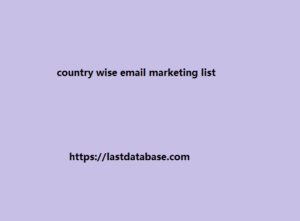What does it take
In addition to disappointing shopping experiences in 2023, the research also expos the most important qualities consumers seek in online retailers, how they research and buy products and their spending intentions for the upcoming 2024 holidays What does it take.
Consumers list convenience (52%), greater access to product offerings (48%) and lower prices (34%) as their primary reasons for shopping online as oppos to brick-and-mortar retail stores. U.S. shoppers cit lower prices (59%), free shipping (53%) and fast shipping (33%) as the three most important offerings when choosing an online retailer.
Conversely the top reasons
Consumers would cease the buying relationship with a vendor were receiving products that do not accurately match their descriptions (39%), excessive shipping costs (38%) and late deliveries (32%).
Seventy-one percent of respondents say they will spend just as much or more online during the 2024 holiday shopping season than they did in 2023 with 53% saying they plan to participate in a Cyber Monday or Black Friday event.
County-specific email marketing gives you the opportunity to connect with a local audience, stay within regulations, and provide resonance with content. You tailor your approach to the particular market-language, preference-which will country wise email marketing list promote better engagement for improved results. Commence building lists based on geographic data and watch your strategy deliver a more personalized, impacting effect.
Forty-three percent of respondents stat that inflation and higher prices have l them to shop online less because they ne to tighten their budgets. On the other hand, 31% say that inflation has caus them to shop online more because they find better deals there.
Graph showing percentages of online
Sixty percent of consumers rely heavily on product reviews found on retailers’ websites when making their final purchasing decision, while 41% turn to third-party review sites.
Discerning shoppers are scouring the internet for the best deals and products, with 35% saying they research multiple retailers and more than 20% turning to marketplaces such as Amazon or eBay to compare pricing options.
Twenty percent say they go directly to the websites they trust to complete purchases and 14% prefer to visit physical stores before purchasing a product online.
Chart showing where products are purchas
In the U.S. and the U.K, more than half of Gen Z shoppers rely on social mia (57%) and TikTok (61%) to research the products they buy. Thirty-three percent choose Amazon as their research method while 21% rely on word of mouth and friends.
Let’s talk about real people
itor’s note: Alex Nazarevich is VP of growth marketing at Unbounce, a software firm headquarter in Vancouver.
B2B marketing? It’s a myth. But before you roll your eyes, hear me out. If your decision to start marketing to businesses means boring buzzwords, generic landing pages and lackluster LinkIn ads, you’re guarante to lose the one thing that matters most – your audience’s attention.
Effective B2B marketing cybersecurity for leaders integrated with ai and generative ai isn’t boring. If anything, it nes to be even more compelling and persuasive because you ne to win over every single person in the buying committee.
The most effective way to kick-start purchasing behavior is to show each buyer that you understand their unique nes and offer the best solution to their pain points. Does this sound familiar? That’s because it sounds a lot like B2C marketing.
B2B is a label that’s kept revenue
Leaders from making genuine connections that drive real results. Worst case, revenue leaders are using it as an excuse to take shortcuts by focusing too literally on ideal customer profiles (ICP), overlooking those small-yet-crucial details that make our target audiences human.
If we don’t stop treating marketing like a faceless transaction, we won’t create the dynamic, personaliz pathways to purchase that are essential for converting new customers.
Do you really know your audience
HubSpot’s latest study found that sault data most marketers don’t know their audience nearly as well as they should. In this study, only 31% of marketers survey understood the online communities their target audience hangs out in.
Marketing to your target audience without understanding how they communicate online could lead to a major mismatch in how you speak to them – like serving carbs at a keto conference. Awkward!
To fix this, you ne to dig deep. Work with teams who touch every aspect of the customer journey to create ICPs that genuinely represent your audience – not just who you wish they were.
When you’re targeting larger or more complex businesses, you’re going to ne to use tools like Wynter and A/B testing to continuously validate and update your ICP and personas to ensure you’re targeting the right people with messaging that resonates.
If you want to do B2B marketing right
Knowing your ICP is that much more pressing because it forms the foundation for deeper personalization – like account-bas marketing and clearly defin buyer committee roles. The goal is to get it right, not just get it done.
Making B2B marketing personal
B2B marketing has the unfortunate reputation of being stuck in a rut of bland visuals and jargon. It’s time to break out of the cookie-cutter mold and get personal. According to a recent report by McKinsey, companies that nail personalization pull in 40% more revenue than their competitors.
Personalizing your marketing doesn’t just look cool. If your marketing isn’t personal, you’re leaving money on the table.
Just because something work before doesn’t mean it always will, and just because it hasn’t work in the past doesn’t mean it won’t work now.
My team was forc to challenge our own assumptions when our research found that video on landing pages isn’t always a conversion booster, even though that had been the case for so many years. Be ready to rethink your strategies and test new ideas. Marketing is about evolving with consumer tastes, not just sticking to what’s familiar.
Prioritize simplicity and brevity over buzzwords
When marketers target marketing at businesses, they entirely miss the point. We’re not marketing to abstract entities; we’re selling to a diverse buying committee where each person brings their own goals, struggles and preferences. If you’re not engaging with your target audience on a personal level, you’re missing out on a huge opportunity.


